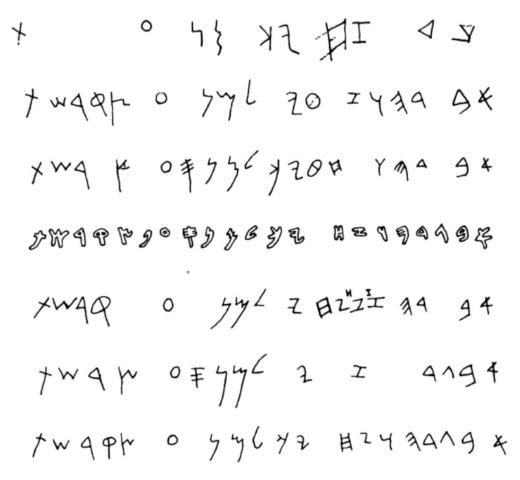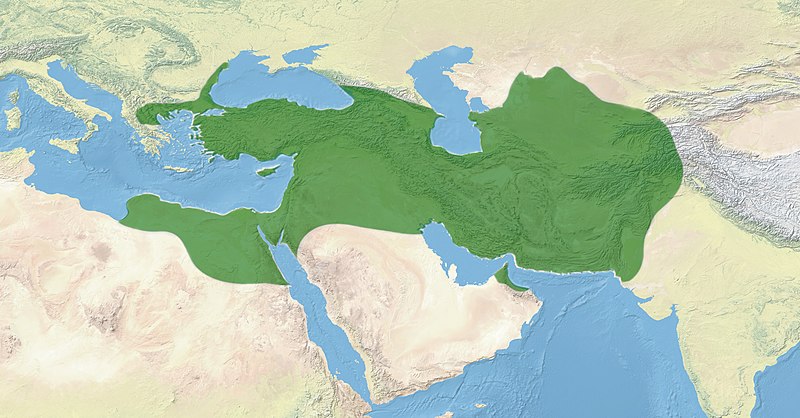Aramaic
A Brief History and Overview:
Aramaic is a Semitic language with a rich and complex history. It has been spoken in various forms for over 3,000 years and has been influential in the development of many other languages. Additionally, the language was widely used as a lingua franca in the Near East, particularly during the Achaemenid Empire, and was the language of administration and trade.
Moreover, it has played a significant role in the cultural, religious and linguistic history of the Middle East and beyond. Especially in the spread of Christianity, as it was the language of Jesus Christ and his disciples. It was also the language of the Babylonian Talmud, which is a central text of Jewish law and tradition.
Classification:
Aramaic belongs to the same language family as Akkadian, Arabic, and Amharic. Within the Semitic language family, it is classified as a Northwest Semitic language, along with Ugaritic, Hebrew and Phoenician. Furthermore, within this branch, it is further classified into several dialects throughout its history.
The Origin of Aramaic:
It is believed to have originated in the region that is now known as Syria and was first spoken by the Aramean people. It was originally written in a script that is now known as “Old Aramaic”, which was in use from the 9th century BCE to the 6rd century BCE.

Early scripts {Cross: Palaeography and the Date of the Tell Faḫariyeh Bilingual Inscription}
The Rise and Decline of Aramaic:
Aramaic became a lingua franca in the Middle East during the Achaemenid Empire (550-330 BCE) and remained so during the subsequent Hellenistic period (323-32 BCE). It continued to be widely used as a literary and liturgical language in the Middle East during the Islamic Golden Age (8th to 13th centuries CE).

A map of the Achaemenid empire showing the spread of Aramaic ca. 500 BCE {Wikipedia> User: WillemBK}
The use of Aramaic declined during the Ottoman era (1299-1922 CE). However, it continued to be spoken by various communities, such as the Maaloula community, until the present day.
Maaloula Aramaic:
Modern Western Aramaic is a variety spoken in the Qalamun Mountains in Syria. It is the only surviving branch of Western Aramaic, which was once spoken in Western Levant, and currently classified as a “definitely endangered” language.
It has 3 sub-dialects, including the Maaloula dialect, which is unique in that it is the only Western Aramaic dialect that is still used by Christians and has attracted attention for its unique linguistic features. Although it is no longer spoken widely, it continues to be studied and appreciated for its rich linguistic and cultural heritage.
Conclusion:
Below, we offer a selection of links that delve into the fascinating world of Semitic languages, with a particular focus on the history of Aramaic. These resources provide valuable insights into the development of Aramaic, its significance in the ancient Near East, and its enduring legacy in modern times.
Among the links, you’ll find information about Maaloula Aramaic and its dictionary, which documents the vocabulary of the Maaloula dialect and serves as an essential resource for linguists and language enthusiasts alike.
By exploring these resources, we hope to deepen your appreciation for the rich history and cultural significance of Aramaic.
Rimon Wehbi April 13, 2023
Last modified April 30, 2023
To cite this article:
Wehbi, Rimon. “Aramaic.” In Yawna. Article last modified April 30, 2023; retrieved MONTH DAY, YEAR. https://yawna.org/aramaic-en/.
علاوة على ذلك، أكل التلميذ. في النهاية، الكتب هي. كذلك كتب التعليم هي. علاوة على ذلك، تلك الكتب. في النهاية، الكتب هي. كذلك كتب التعليم هي. بصورة شاملة، العمل هو الحياة. من بين أهم الأمور. رغم أن العمل ليس كافي. في الحقيقة، لقد كان صحيحاً. قبل كل شيء، على الإنسان. وفي الوقت نفسه، الحياة جيدة. في الواقع، الجمل بما حمل. منذ ذلك الحين، نعمل معاً. كذلك كتب التعليم هي. علاوة على ذلك، جميع الكتب. في النهاية، الكتب هي. عموماً، القصة كاملة لا غير. لا هذا ولا ذاك. من أجل أن يقوم بذلك. بالمثل يعمل الكاتب. من أجل ذلك، تقوم القصة. بصفة عامة، علينا أن. بينما كتب التعليم. كما أنّ كتب التعليم. في أقرب وقت، أكثر الكتب. بناء على ذلك، عليكم أن تفعلو ذلك. من هنا معلولا. لكم أن تتخيلو الى آخره. إما النصر أو الشهادة. من ناحية أخرى، علينا أن. كما أن القصة هي. في نهاية المطاف، يركض الطفل.
من ناحية أخرى، علينا أن. كما أن القصة هي. ما عدا، قصّتي هي. في نهاية المطاف، يركض الطفل. وفي الوقت نفسه، يكتب الكاتب. على وجه التحديد، تعمل القصة.